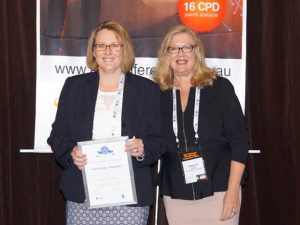We continue with our popular Chrisisms series by noted risk specialist adviser and consultant, Chris Unwin.
Standing Up on the Phone
When speaking with clients on the phone, are you sitting down or standing up? When calling a potential client to set up a first meeting, are you sitting down or standing up? If you don’t think it makes any difference to the result of the call whether you are sitting down or standing up, then you need to read this article.
To this day I remember the surge of adrenalin I experienced when I walked for the first time into the offices of Berkeley Walbrook – the company with which I was to start my career in the life insurance industry some 9 months later in November 1978.
It was an open plan office with around 30 young, dark suited and power tied individuals (largely but not exclusively male) either standing up on the phone or sitting at their desk with a client in the open plan – the atmosphere and the “buzz” were electric! I share this with you because it was such a world apart from the morgue like cubicled cocoon of my office in the Bank of America in the City of London at that time.
Having become a client of this life insurance brokerage in March 1978, I joined it as a trainee consultant in November of the same year, attracted as much as anything else by the ‘shot in the arm’ I got whenever I visited the office. Almost immediately I discovered the importance of standing up on the phone – especially when prospecting.
There are 2 main reasons why it is so important to stand up and move around on the phone. The first is a boring, scientific reason and the second is for me a much more important consideration.
I’m sure you would all agree that when you are standing up and moving around, you are more physically agile than when you are sitting down – obvious, right? But did you realise that it has been scientifically proven that when you are standing up and moving around, you are also more mentally agile than when you are sitting down?
How many of the people you call at their workplace are likely to be standing up and moving around when talking to you on the phone? A very small number, I would say. So if you are standing up and moving around yourself, you will have an immediate edge in terms of mental agility over the person at the other end of the phone – not to be sniffed at!
But much more importantly, I believe you should find it impossible to sit down on the phone – especially when prospecting; that is assuming the result of the call matters to you. You see, if the result of the call, i.e. whether you make the appointment or not, matters to you, then there will be a chemical ingredient pumping in your system that will render you incapable of sitting down motionless in a chair and that is what we call adrenalin. If you have adrenalin coursing through your veins, then you have to be on the move and consequently both physically and mentally more agile – and therefore, trust me, more likely to get the result you are looking for.
The Importance of Visualisation
Whether it be a personal protection package or investment strategies, financial planning is common sense not rocket science, right? So when your clients buy into your recommendations, are they doing so because they have been carried away on a tide of logic and reason or because they can clearly visualise the benefits of their actions?
As financial advisers it is absolutely essential that we are getting our clients to do the two “V”s as often as possible, namely verbalise and visualise. The way we get clients to verbalise is to ask questions and the way we get clients to visualise is to paint pictures.
The subject of verbalisation will be the subject of another “Chrisism”, but today we are focusing on the importance of visualisation. Painting pictures can be done literally on a piece of paper or a whiteboard, but fortunately (since I have a problem even with drawing a house with square windows!) it can also be done verbally, thereby enabling the client to create their own pictures in their head. Either way, the important concept to grasp is that, as Napoleon Hill once said, “Whatever the mind of man can conceive and believe, it can achieve”. This quote captures the importance of your clients being able to visualise the benefits of what they have done or possibly the ‘what if’ scenario if they were not to do it.
To really appreciate the importance of painting pictures for your clients, I want you to consider the following:
When you take a new client on board, whether it be just for a personal protection package or for investment strategies as well – and let’s say that the client has ‘parted with’ (because this is the way they will view it) $4,000, what does your client leave your office with in the form of physical, tangible product to show for their $4,000? As you well know, the answer is absolutely nothing. Sure, they have a bunch of 3 letter acronyms such as an FSG, an SOA, a PDS (or maybe two if they’re lucky!), but these are not documents that they would be quite happy to buy in their local book store for $4,000! And this makes them highly vulnerable to another 3 letter acronym called PPR – post purchase remorse, and if they can’t clearly visualise the benefits of what they have done or the downside of not doing it, they could easily hit the panic button.
So please understand that, in the same way that words of logic and reason go in one ear and out the other, a picture once lodged in the brain stays there and can be easily recalled just with the use of a word or phrase to jog the memory.

Chris Unwin is a financial adviser of 37 years standing and has been a specialist risk adviser for the last 22 years. His training and consulting business has operated for 12 years and it specialises in helping advisers across the full spectrum of experience with their client engagement skills, both in the risk advice specific space as well as in the more generic soft skills space.
…And if anyone would like to receive Chris Unwin’s Chrisisms on a fortnightly basis, just email him with your details, including the state in which you reside.
Contact or follow the author: Telephone: +61 417 281 034 | Website | Email | LinkedIn











